How Does One Reverse the Ecological Crisis?
Inventing a Process for Reversing the Ecological Crisis
We are the creative force of our life, and through our decisions rather than our conditions, if we carefully learn to do things, we can accomplish those goals. – Stephen Covey
When John F. Kennedy declared in 1961 that:
… this nation should commit itself to achieving the goal, before this decade is out, of landing a man on the moon and returning him safely to Earth …
… he was setting a “seemingly-impossible goal” because, in the words of NASA Flight Director Chris Kraft:
When Kennedy asked us to do that in 1961, it was impossible.
To land a man on the moon and return him safely to Earth, the people of 1961 had to invent two processes for achieving that seemingly-impossible goal.
First, they had to invent a complete process – called Lunar Orbital Rendezvous -- for landing a man on the moon and returning him safely to Earth.
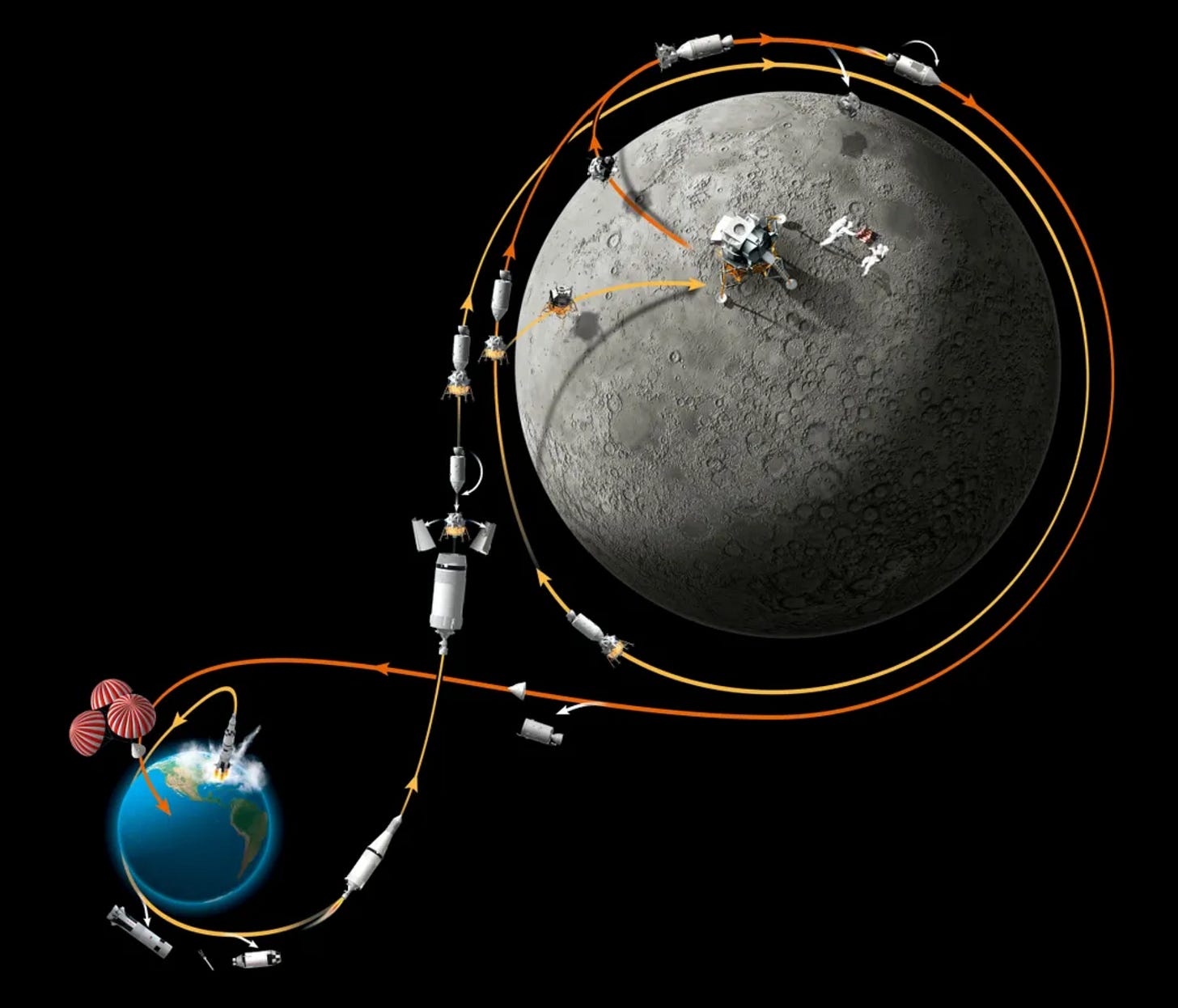
Second, they had to invent a process for inventing the specific technological advances – developed and tested through the Mercury missions, the Gemini missions and the Apollo missions -- required for the complete process of landing a man on the moon and returning him safely to Earth:[1]

Just as the people of 1961 had to invent a process for inventing the specific technological advancements required for the complete process of landing a man on the moon, so must we invent a process through which people everywhere make specific decisions and take specific actions required for the complete process of reversing the Ecological Crisis.
Such a process – through which people everywhere make such decisions and take such actions – might look like:
First, an understanding that:
Reversing the Ecological Crisis requires a simple decision-making process through which people everywhere want, decide & act to adopt things-we-extract options[2] and things-we-use options[3] -- for meeting their human physical needs -- that scale back the human-created things-we-extract flows[4] & pollution flows[5] that are creating the Ecological Crisis.
In other words, reversing the Ecological Crisis requires a simple decision-making process through which people everywhere decide to adopt:
things-we-extract options that take less things-we-extract from the biosphere, that is, they take less things like forests, fresh water, wildlife, soils and minerals from the biosphere, or
things-we-use options – like an energy option, a water option, a materials option, a food option, or a manufactures option – that put less pollution into the biosphere.
A things-we-extract option (like re-wilding) that takes less things-we-extract from the biosphere -- or a things-we-use option (like a solar water heater) that puts less pollution into the biosphere -- may be called a “regenerative option” because less things-we-extract flows and less pollution flows allow the biosphere to regenerate itself …
Second, an understanding that:
Less things-we-extract flows or less pollution flows make an option “regenerative” because less things-we-extract flows and less pollution flows allow the biosphere to regenerate itself.
Such lessened things-we-extract flows – measured by an increase in the number of species in an area – may be called a “regeneration benefit” of a things-we-extract option.
Such lessened pollution flows – measured by an option avoiding more pollution than it incurs – may be called a “regeneration benefit” of a things-we-use option …
Third, an understanding that:
Just because a regenerative option delivers regeneration benefits (measured by increased # of species per area or avoided pollution flows) does not mean people will want to adopt it.
If a regenerative option does not meet a human physical need – for food, for water, for heat, for shelter, or for transport – people are not going to want to adopt it.
Similarly, if a regenerative option that meets a human physical need costs more money than a non-regenerative option that meets that same need, people are not going to want to adopt the regenerative option.
If people want to adopt a regenerative option, they need to persuade themselves of two things:
First, they need to persuade themselves that the regenerative option meets a human physical need. In other words, the regenerative option has to work. It has to perform. It has to deliver nutritious food, or drinkable water, or a habitable building, or safe transportation, or usable electric power.
If a regenerative option meets a human physical need, if it works, if it performs, it may be said to deliver “performance benefits.” If a regenerative option does not deliver performance benefits, people are not going to want to adopt it.
Second, if people want to adopt a regenerative option, they need to persuade themselves that the regenerative option avoids more costs than it incurs. In other words, the regenerative option has to deliver avoided cost savings compared to the non-regenerative option currently in use.
If a regenerative option avoids more costs than it incurs, it may be said to deliver “economic benefits.” If a regenerative option does not deliver economic benefits, people are not going to want to adopt it.
To recap: a regenerative option that people everywhere want to adopt …
Fourth, an understanding that:
People everywhere wanting to adopt regenerative options creates demand for a new & extremely simple kind of information services – called “regenerative information services” – in the form of:
accurate evaluations, comparisons and measurements
of performance benefits[6], economic benefits and regeneration benefits[7]
of things-we-extract options and things-we-use options for meeting human physical needs …
People everywhere wanting to adopt regenerative options creates demand for entrepreneurs who design and build an extremely simple database and computer-implemented application (an “app”) for supplying regenerative information services to people everywhere …
Fifth, inventing a simple decision-making process – called “regenerative decision-making” – through which:
People everywhere identify options for meeting their human physical needs.
People everywhere use regenerative information services for evaluating the performance benefits, economic benefits and regeneration benefits of those options …
People everywhere use regenerative information services for comparing those benefits, and …
People everywhere persuade themselves what options they want to adopt and decide to adopt regenerative options …
Sixth, inventing a simple Observe – Orient – Decide – Act (OODA) feedback loop – called a “regenerative OODA loop” -- through which:
People everywhere observe and measure the benefits actually delivered by the adopted regenerative options.
People everywhere orient to deciding exponentially faster to adopt exponentially more regenerative options for delivering exponentially more benefits.
People everywhere decide exponentially faster to adopt exponentially more regenerative options.
People everywhere act exponentially faster to adopt exponentially more regenerative options and deliver exponentially more benefits.
People everywhere observe and measure the benefits delivered by the newly-adopted regenerative options, and cycle again through the simple regenerative OODA loop.
Through a simple regenerative decision-making process within a simple regenerative OODA loop, people everywhere decide exponentially faster to adopt regenerative options at the exponential rate required for reversing the Ecological Crisis as a whole …
People everywhere wanting, deciding & acting to adopt regenerative options (in turquoise) – that deliver regeneration benefits in the form of avoided things-we-extract flows and avoided pollution flows -- scales back the things-we-extract flows and pollution flows (in orange) …
… and, at the same time, keeps intact the things-we-extract flows (in orange) and things-we-use flows[8] (in white) for meeting every human being’s physical needs …
… which allows the biosphere (in deep green) to regenerate itself as a whole …
… and allows the creativity, intelligence and regenerative capacity of the biosphere as a whole to reverse the Ecological Crisis as a whole …
… and allows the biosphere to meet the physical needs of all its living beings, including its human beings, as a whole …
Just as the people of 1961 had to invent a process for inventing the specific technological advancements for landing a man on the moon, so must we invent a regenerative decision-making process through which people everywhere want, decide & act to adopt regenerative options for reversing the Ecological Crisis.
To the best of my knowledge, regenerative decision-making is the first and only process ever invented for reversing the Ecological Crisis as a whole.
If you can find or invent a simpler process for reversing the Ecological Crisis, please let me know.
To receive new posts and nourish my work, please consider becoming a free or paid subscriber to my Substack channel:
If you like today’s post, please share it far and wide:
Thank you for reading Solving the Eco-crises.
Peace and Aloha!
Erik
P.S. I cross-posted this article on Medium for greater reach.
[1] This article, “Apollo vs. Gemini: A Technological Comparison,” surveys the technological advancements by technological categories.
[2] Things-we-extract options include options for extracting things like forests, fresh water, wildlife, soils and minerals from the biosphere for meeting human physical needs.
[3] Things-we-use options include options for using things like energy, water, materials & chemicals, food & fiber and manufactures & structures for meeting human physical needs.
[4] Things-we-extract flows include flows of things like forests, fresh water, wildlife, soils and minerals out of the biosphere for meeting human physical needs.
[5] Pollution flows include flows of things like greenhouse gas emissions; aerosol pollutants like smoke, dust & sulfates; synthetic pollutants like herbicides, pesticides & microplastics; ozone-depleting gases; and phosphorus & nitrogen pollutants into the biosphere from human beings’ uses of things-we-use.
[6] People everywhere using regenerative information services – supplying evaluations of the performance benefits of things-we-extract options & things-we-use options for meeting human physical needs – keeps intact the things-we-extract flows & things-we-use flows for meeting every human being’s physical needs.
[7] People everywhere using regenerative information services – supplying evaluations of the regeneration benefits of regenerative options for meeting human physical needs – know that their adoption of regenerative options is making a difference for reversing the Ecological Crisis.
[8] Things-we-use flows include flows of things like energy, water, materials & chemicals, food & fiber and manufactures & structures for meeting human physical needs.



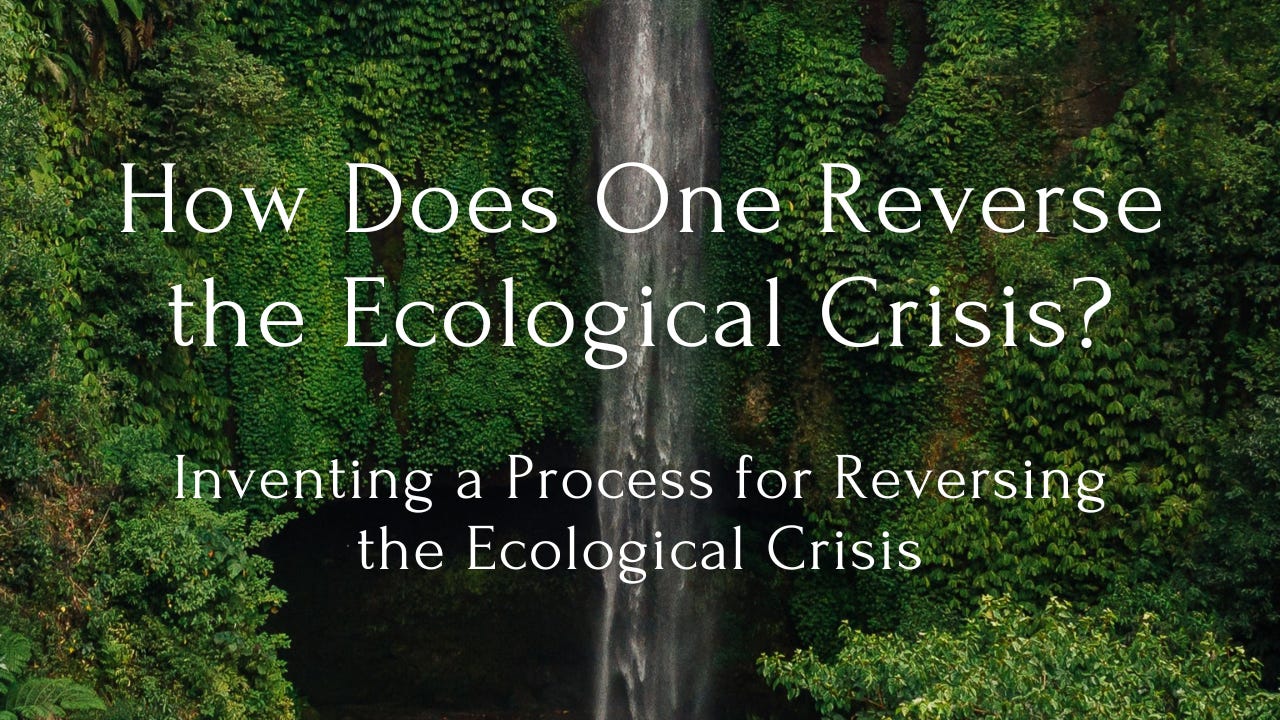


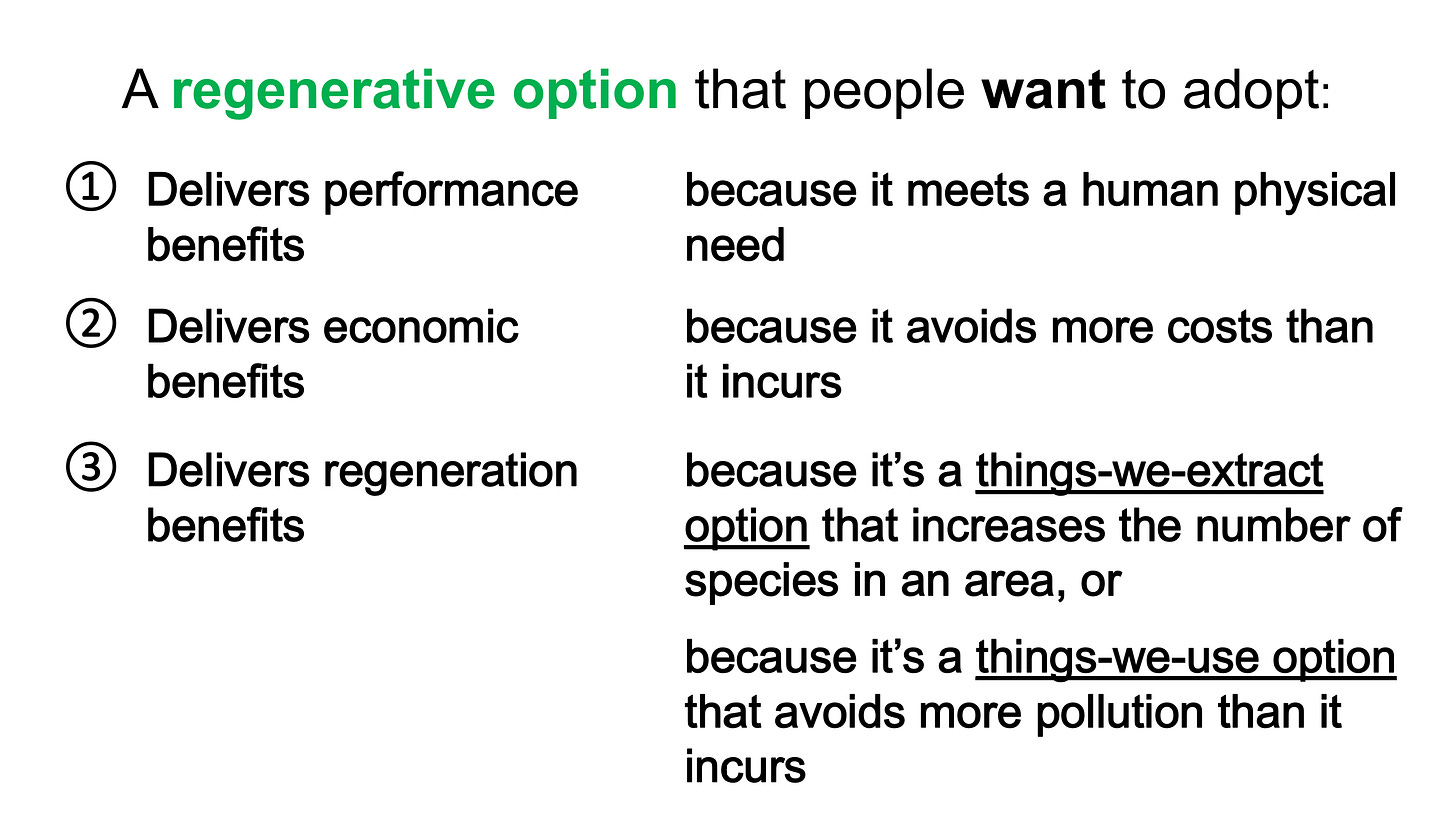
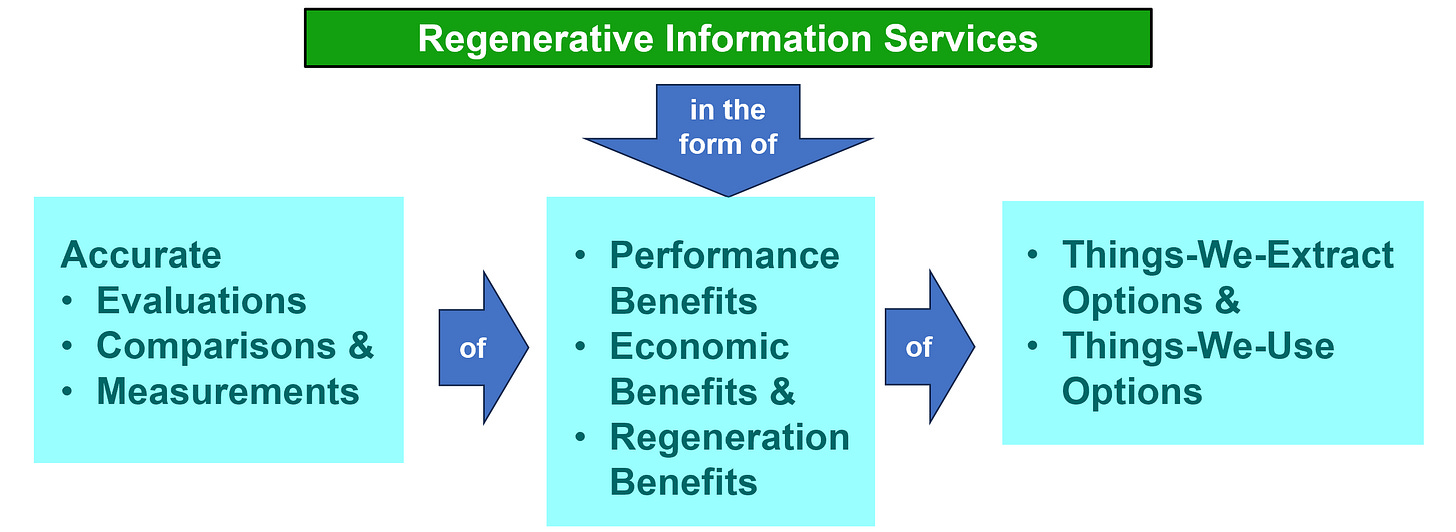
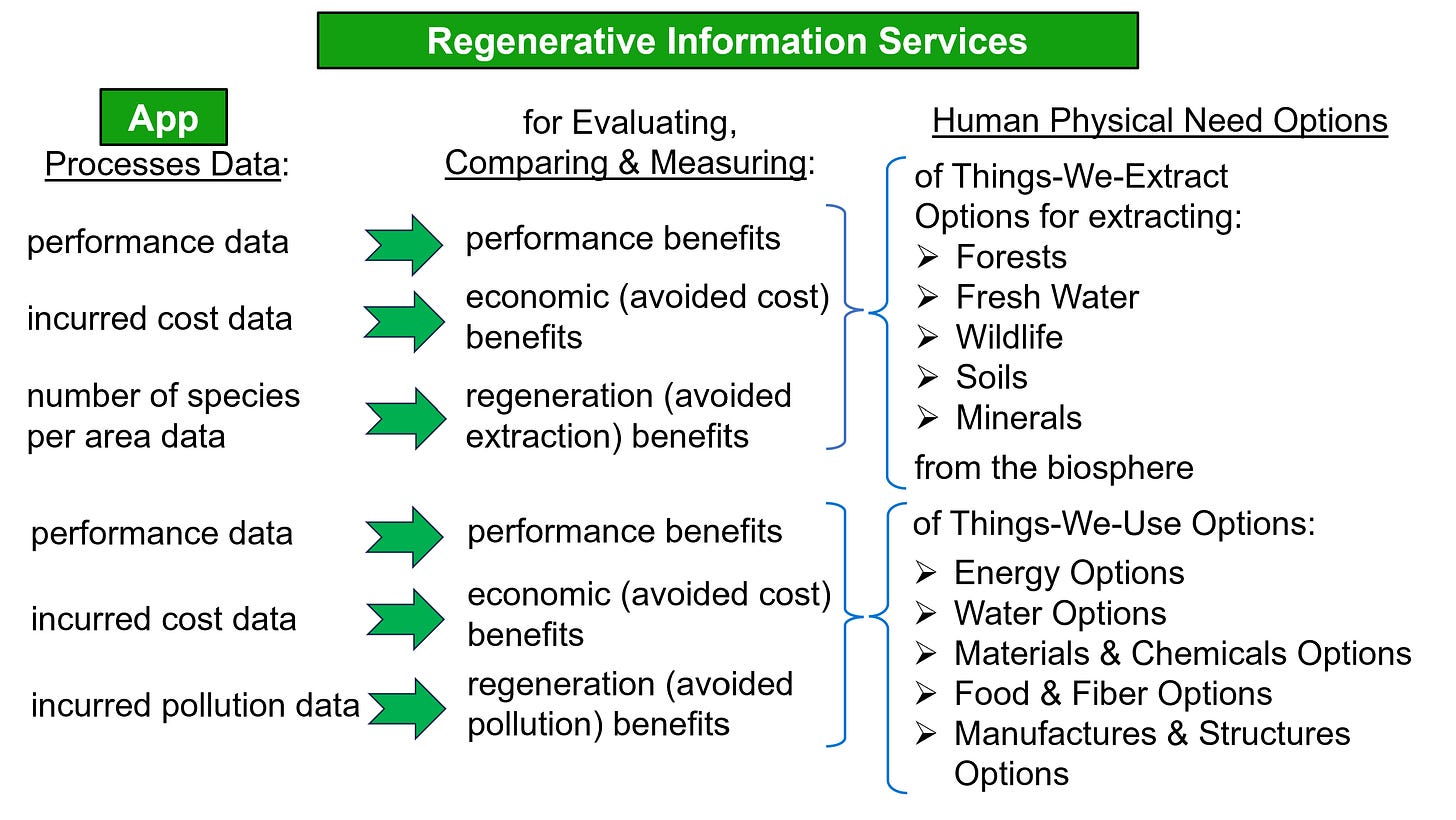
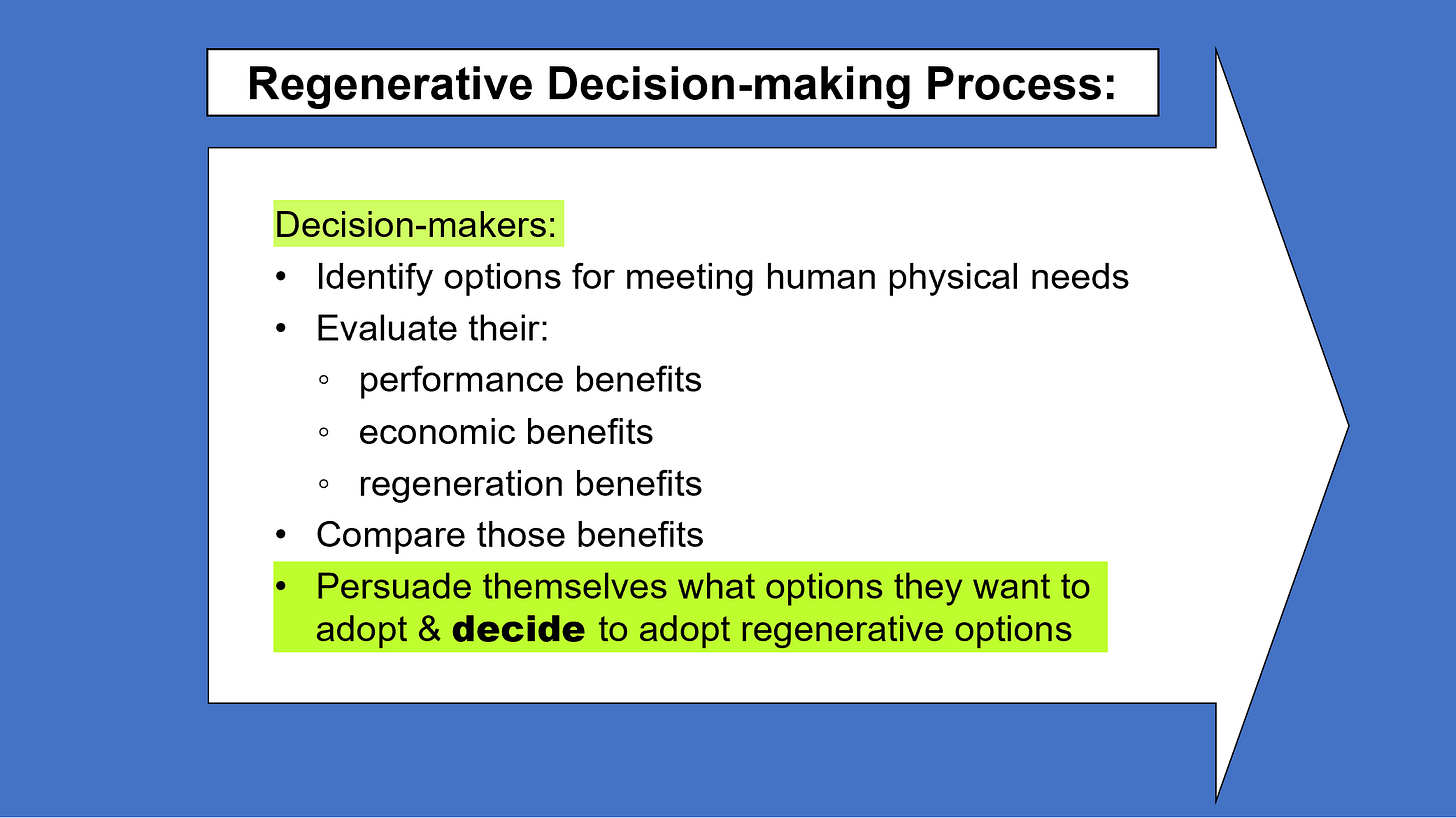
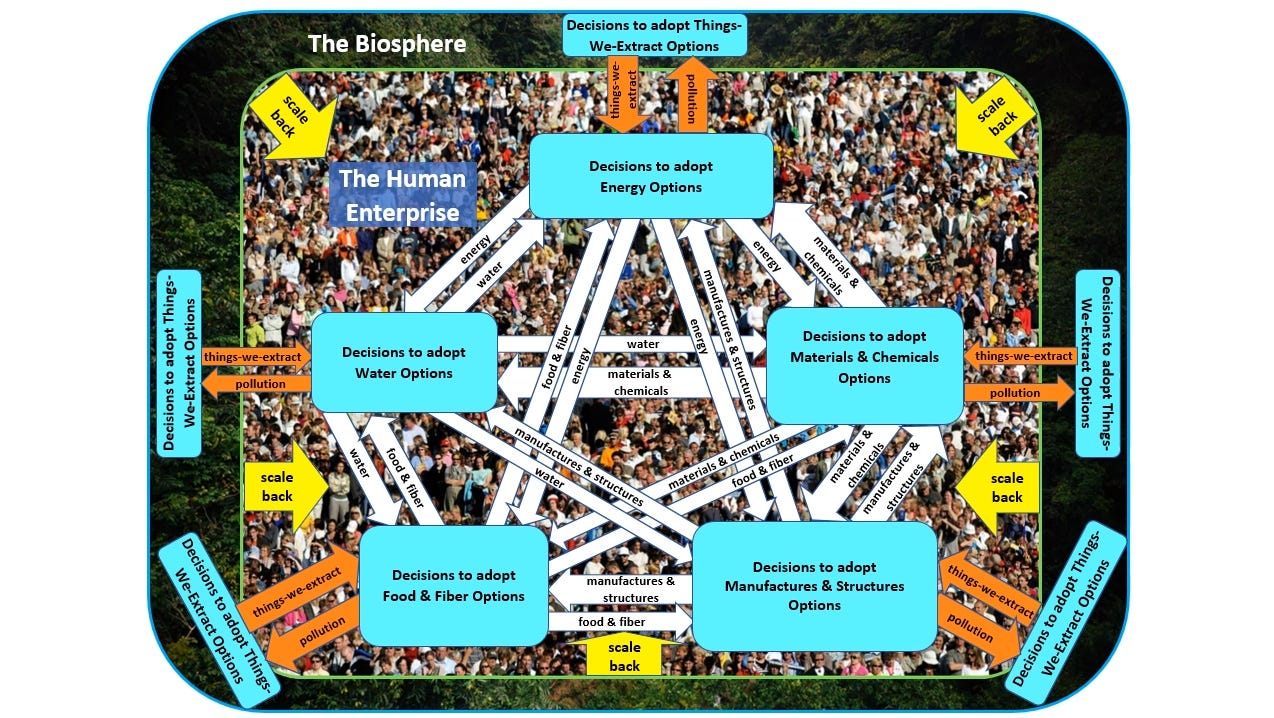
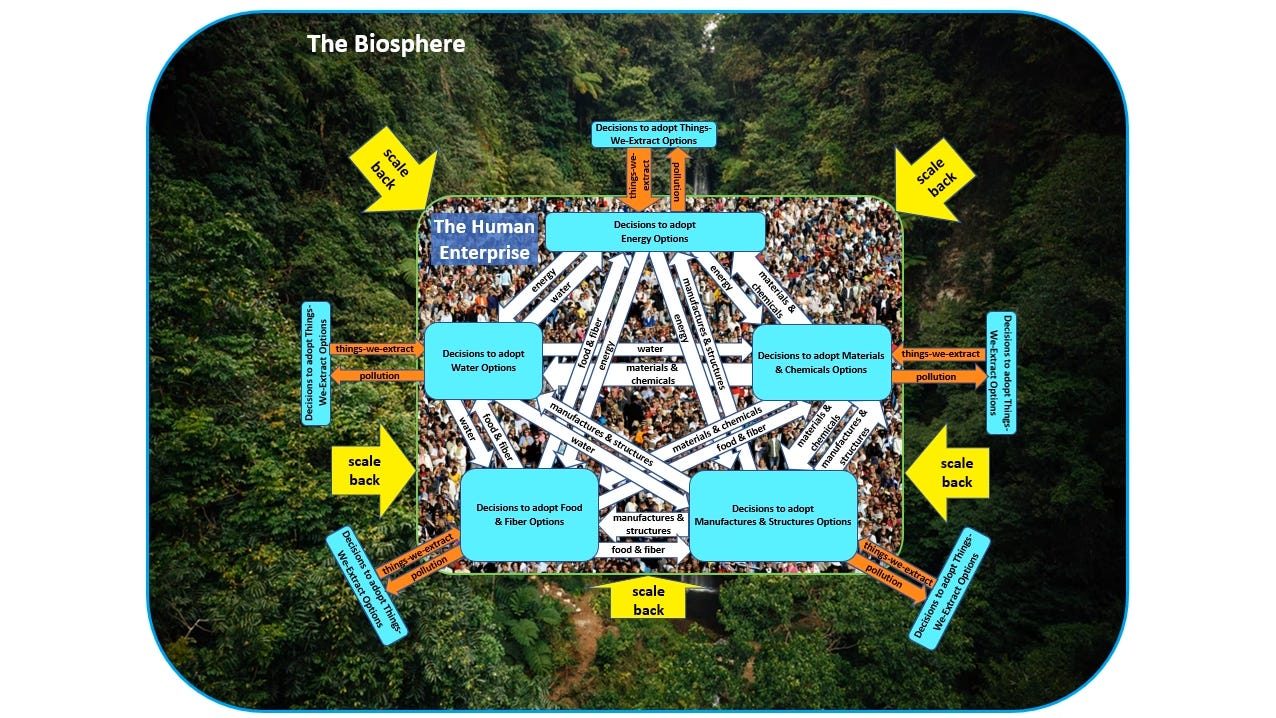
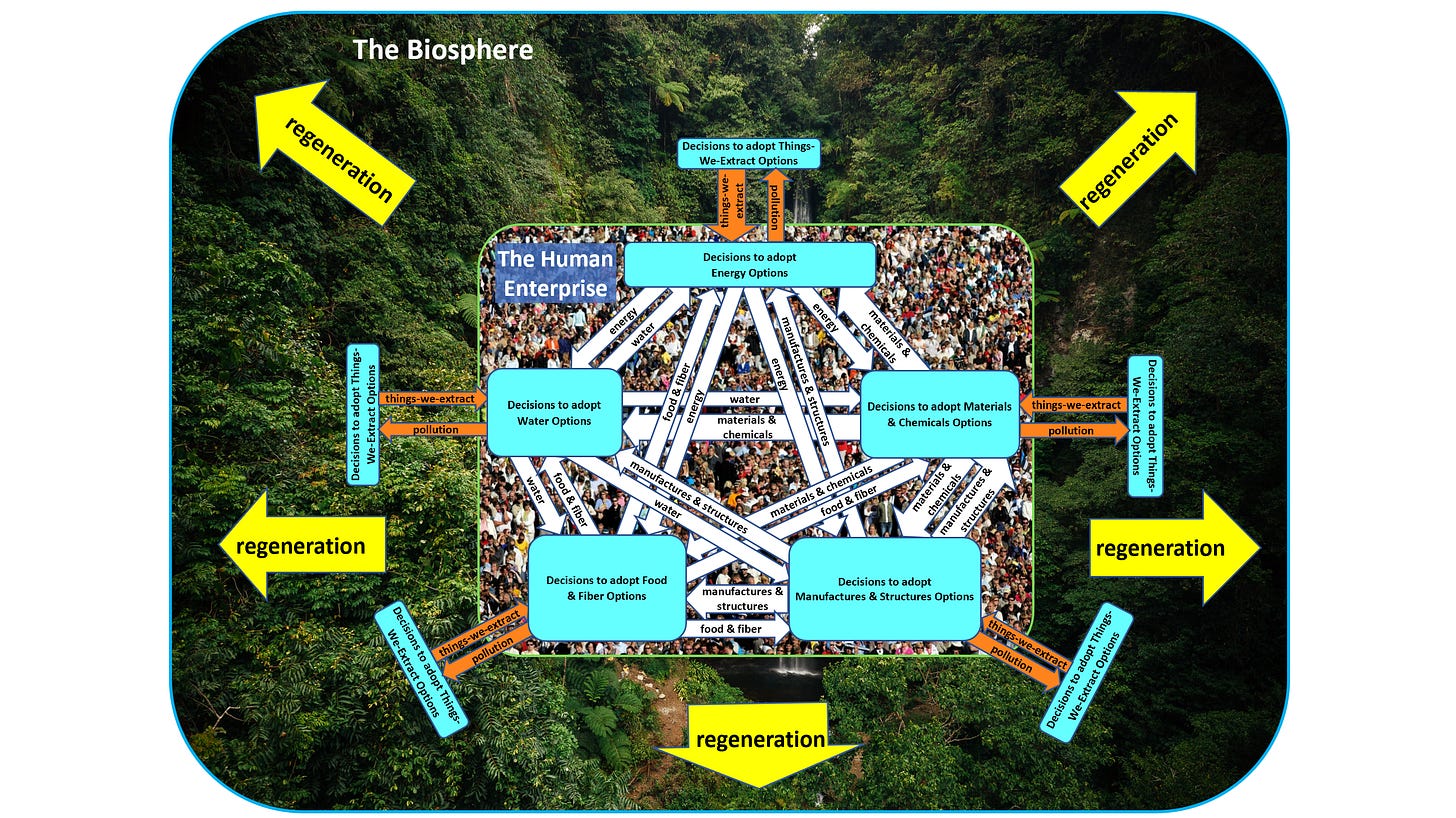
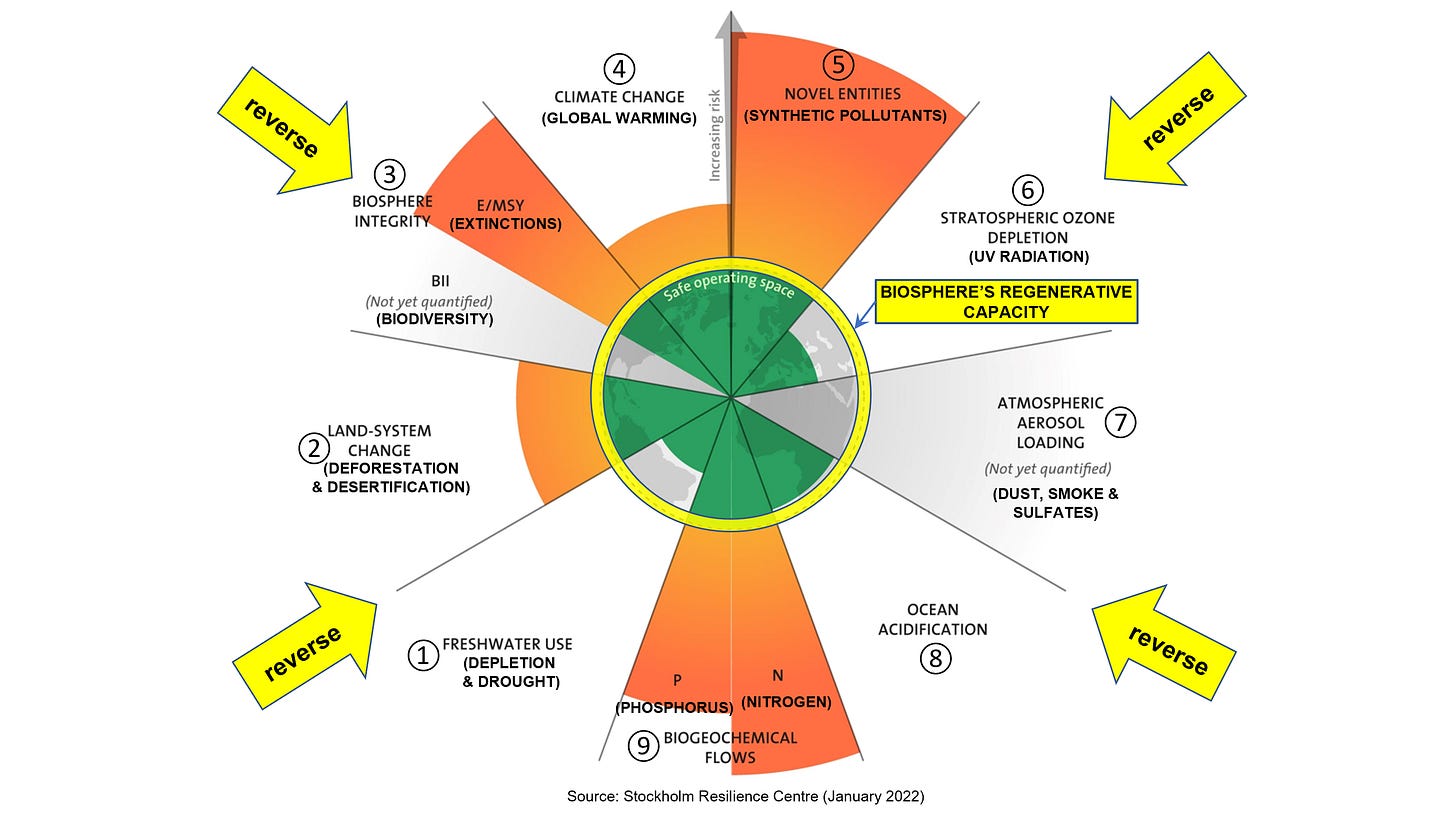
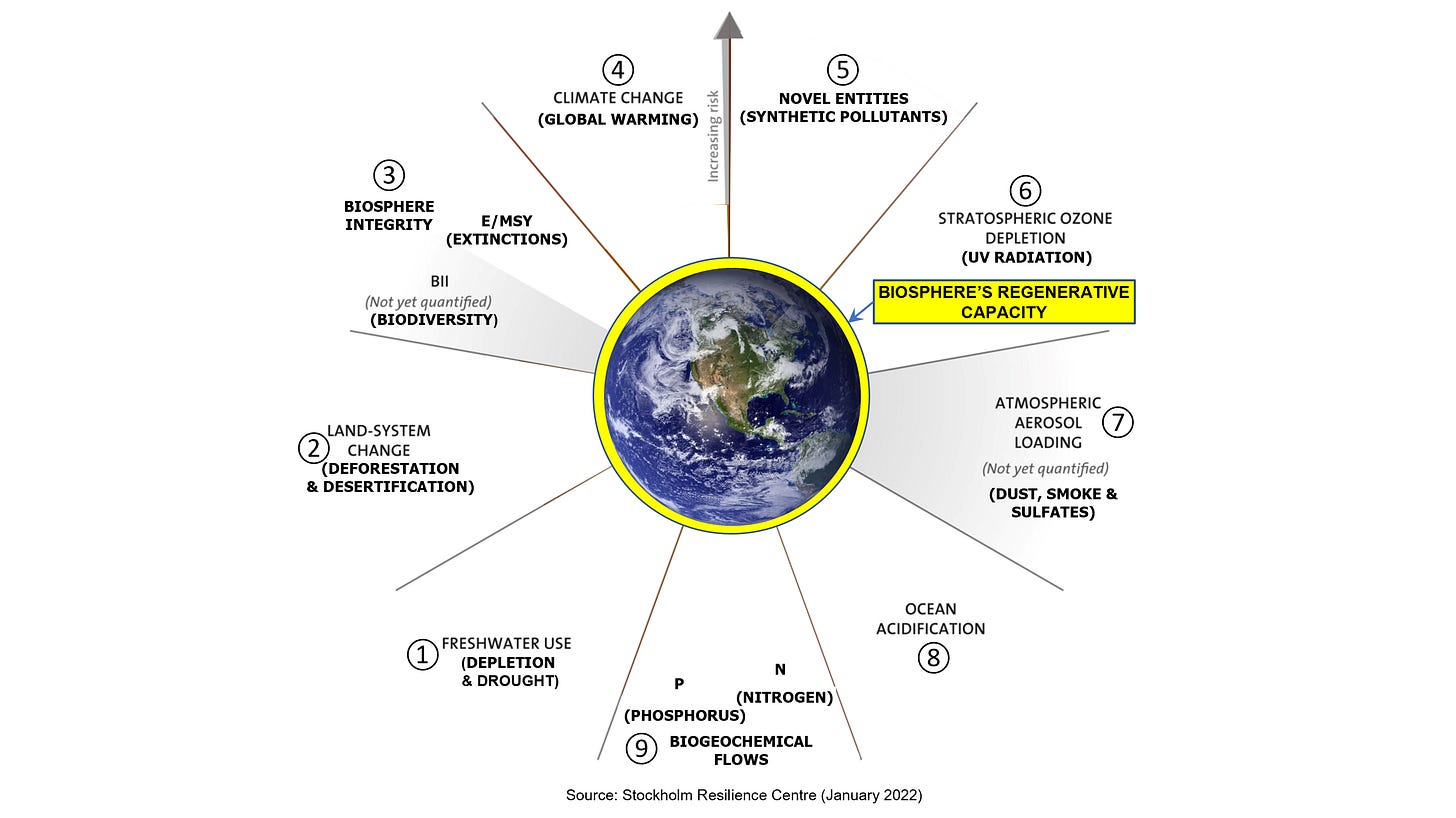
The concept of regenerative decision-making grounded in performance, economic, and regeneration benefits really resonated with me.
I’ve developed a few solutions aimed at supporting degrowth, but I’ve struggled to find a place where they can be properly evaluated or funded.
A system like the one you described would make that process so much more accessible and impactful.
Here's a link to an article explaining a new housing design I developed that can help the degrowth movement achieve it's goals::
https://substack.com/@simpofhumanprogress/note/p-159529693?r=42g2sa